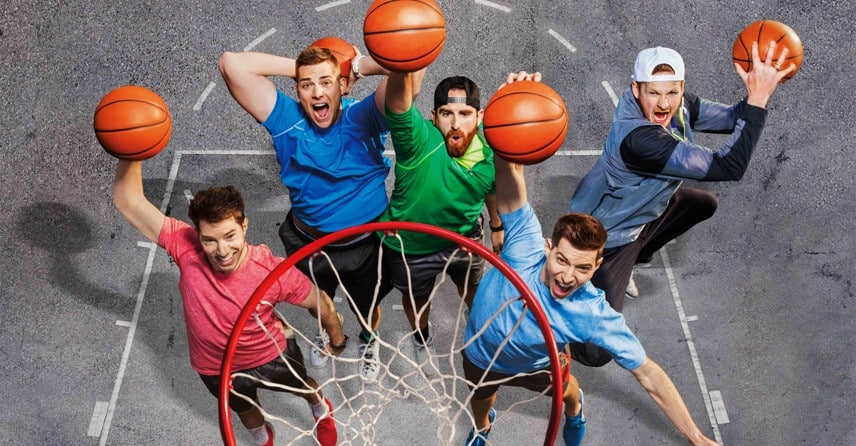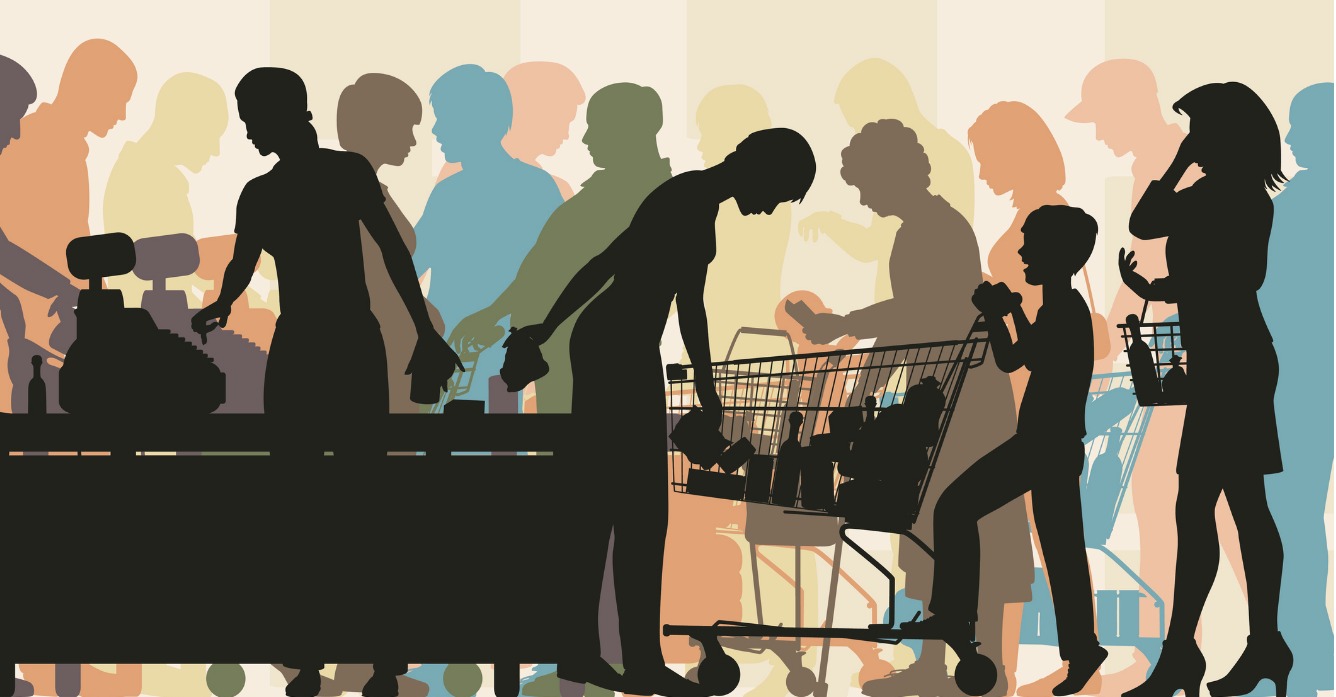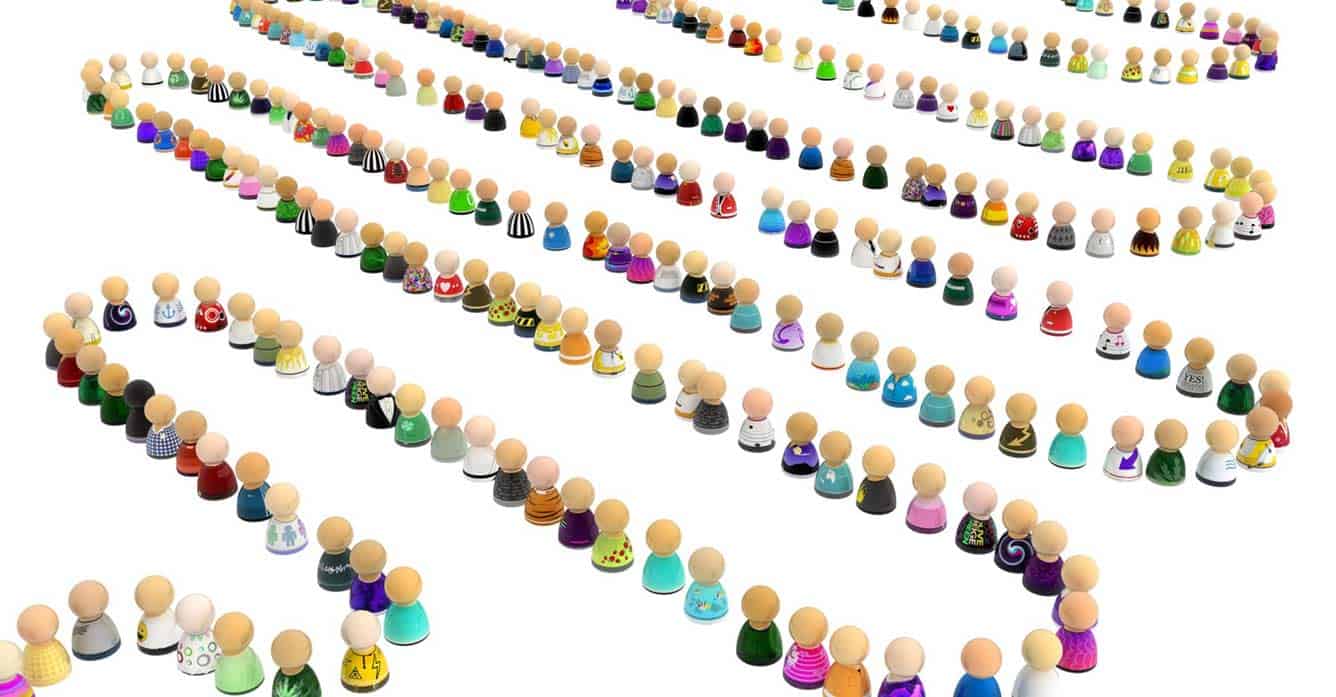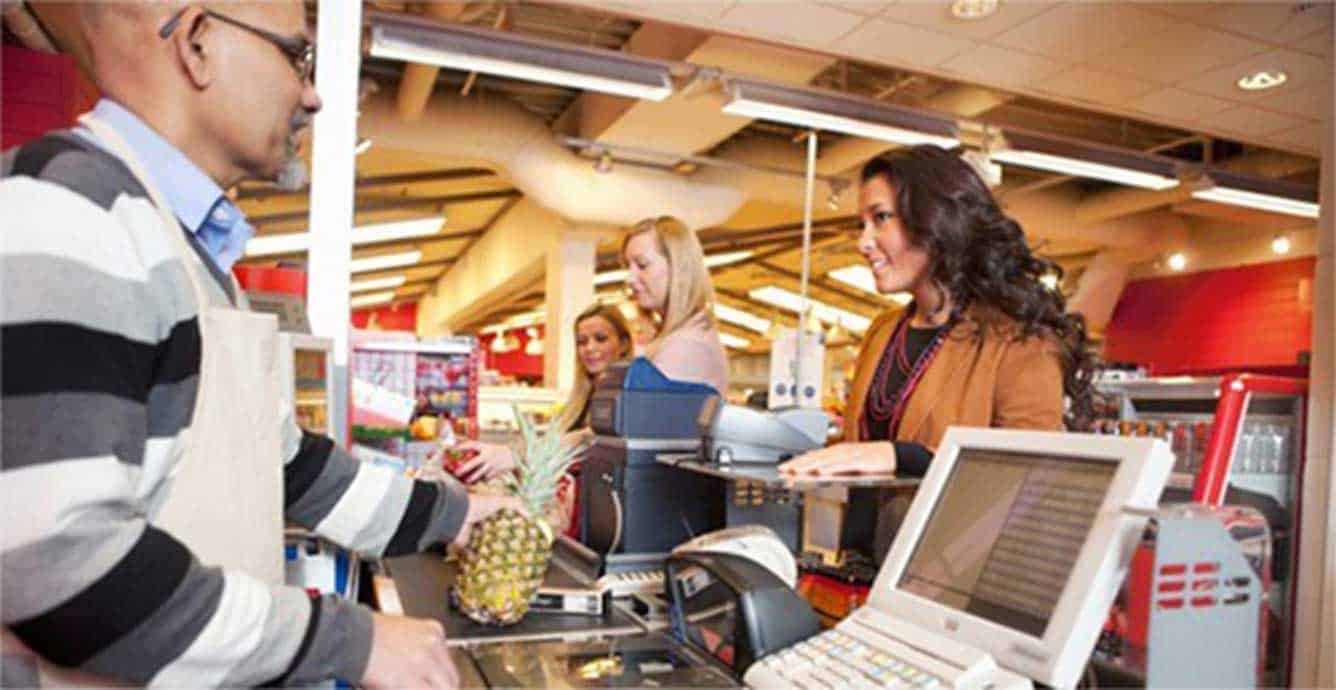Not long ago, my sons introduced my wife and me to current trends in pop culture, including the YouTube phenomenon called Dude Perfect™. Dude Perfect consists of five college friends from Frisco, Texas, who became popular for posting exciting sports videos revolving around trick shots, a form of shooting basketballs into hoops from odd locations or positions. They have more than 38 million YouTube subscribers as well as their own TV show on Nickelodeon. My sons love Dude Perfect, and I must admit that I like them, too. Their films are funny and fascinating; also, their content is clean for children of all ages. In addition to trick shot videos, Dude Perfect produces comical stereotype videos that poke fun in a healthy way at different relevant topics.
In October, they released a video called Grocery Store Stereotypes. The seven-minute video is filled with commonly experienced anecdotes that many consumers deal with when shopping for groceries. The main purpose of the video is probably to get the audience’s laugh; however, it stimulated my own thought about what we can learn in retail operations leadership from grocery store queues. The following blog is the first in a multi-part series that looks at some topics raised in this video. Today, the question is: what can Dude Perfect’s video about grocery store typecasts teach us regarding queue management?
In the first part of the video, approximately 29 seconds in, we find Tyler in black and Garrett in white, both working with walkie talkies to pick the quickest checkout lane. Viewers might assume their goal is to reduce wait time. During their exchange, Tyler picks a lane with one person in line, but when he sees this patron pull out coupons, he bolts to another queue. Simultaneously, Garrett picks a lane with one person before him, but he darts away when he discovers the customer is paying with a physical check. What conundrums! In the end, their search results in a lane without customers. At that moment, however, the cashier closes the lane to go for a lunch break.
My three real-life takeaways from this clip are below:
- Customers care about how long they must wait in line. Shoppers want to find what they need, pay for their items and get on with their day. Many consumers view their time as extremely valuable; thus, waiting at someone else’s request, such as in line at checkout, is wasteful. Dude Perfect exaggerated this idea with walkie talkies. Nonetheless, I had many past grocery shopping experiences like this, when my wife asked me to scan the front end to spot a lane with the smallest queue or least number of checkout items.
- Retailers know that customers care about how long they wait in line. Retail operators continually look at process or technology upgrades to increase customer throughput in stores. This minimizes the time spent waiting at checkout. Some examples of initiatives one might see at grocery stores to address queue size include:
a. Personal scanning devices, allowing customers to scan items while shopping, then process payment at a dedicated POS station;
b. Multiple self-checkout lanes;
c. Emailed receipts versus in-store printed receipts;
d. Camera systems monitoring queue length and recommending new-lane openings to managers;
e. Curbside pickup or home delivery, providing the opportunity to bypass in-store checkout;
f. Or cashierless store concepts.
Consumers are not far from having applications that inform them, from afar, how long checkout lines are at the local grocery store, just like amusement parks provide for ride queues. - Technology alone is not the answer. Retailers refer to queue size tolerance levels like math problems, such as 1 + 2 = 3. The first number (1) in this formula represents the customer during check out. The second number (2) represents the acceptable number of people waiting in queue. If a camera system notifies a manager that the current queue sizes are outside the tolerance level (3) and recommends opening another register, the manger becomes aware of store circumstances. That said, the manager must act on the technology recommendation for conditions to change. Also, barriers commonly arise, such as:
a. What if there are not enough employees available to open a new register?
b. What if there are no cross-trained employees staffed to move from their department to the register?
c. What if pulling someone from another store department hurts that area’s customer service capabilities (e.g., like in the pharmacy or deli)?
To summarize, retailers might consider queue management first as a forecasting and staffing issue. When labor forecasts are off, it becomes very difficult for work schedules to provide the right number of people with the right skills at the right time. Forecasts need to be highly accurate by day and 15-minute interval. Also, accurate labor standards or reasonable-expectation metrics are needed to convert volume forecasts into raw labor demand. The raw labor demands are then converted into usable labor demand, where the requirement by job or task is rounded to a full-time employee equivalent. Scheduling systems take a retailer’s unique service parameters, by store, into consideration. Examples include:
- Minimums, such as one cashier must be available for all hours of the day;
- Maximums, such as when a store has 10 registers open and customer demand calls for 11, the requirement is capped at 10 cashiers;
- Rounding, such as the question: for a 15-minute interval, if the raw labor demand is 2.4 cashiers, should the scheduling system round down to two cashiers or up to three?
- Spreading, such as the question: how should fixed hours be allocated across the day?
- And finally, queueing, such as setting the formula for tolerance levels (e.g., 1+1, 1+2, etc.).
On the topic of queuing, many retailers do not have the right tools in place to accurately evaluate different queueing scenarios. Some instances that come to mind (using the formulaic examples from above):
- 1+1 for all hours;
- 1+1 during peak times;
- 1+2 during non-peak times;
- 1+2 during mid-peak times;
- No requirements during low-peak times;
- Or another combination of these.
Many retailers are striving for a 1+1 tolerance level or better (i.e., having no more than two people in line at one time) to keep their queue relatively low. However, a true 1+1 model requires higher payroll costs for cashiers and baggers than a 1+2 model or greater. Regardless of the tolerance level, the staffing requirements to provide the expected queueing tolerance level must be standardized so retailers can make decisions on the payroll investment.
In ending, consider your options around queueing management to meet your tolerance level. There are technology solutions today that measure queue length, which can be valuable to retailers. That in mind, the value of a solution diminishes without accurate labor forecasts and staffing models. A holistic approach to queue management that includes proper standards, forecasts, staffing and scheduling has provided many grocery retailers with the financial margin they desire to standardize their queue tolerance level. In doing so, they found a sustainable way to secure brand loyalty.



